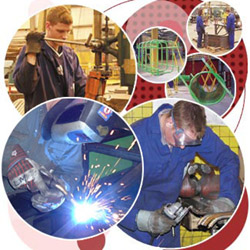
| Ha Noi runs up trade deficit in 2011 | |
The capital experienced a trade deficit of US$11.23 billion during the first nine months of the year, according to the city’s Statistics Office. Export revenue hit nearly $7.16 billion, with imports valued at $18.39 billion. In September alone, exports reached only $875.2 million in comparison with imports worth $2.03 billion. To date, imports have been topped by fertiliser, which rose 48.5 per cent in comparison to August, followed by fuel, up 47.5 per cent. Exports that significantly contributed to the capital’s turnover included coffee, up 24 per cent over August, and art articles , up 21 per cent. Meanwhile, tea and electronic exports declined by 1.3 and 14.9 per cent, respectively. According to official information, China has been the largest import market, accounting for 24.1 per cent of the city’s total export turnover while Japan accounted for 9.7, South Korea for 8.3 and Singapore for 6.8 per cent. In contrast, HCM City saw a trade surplus of $1.28 billion in the first nine months of 2011 with exports hitting around $20.3 billion and imports valuing $19 billion, according to the HCM City Statistics Office. In September, HCM City’s exports were worth $2.04 billion, a decline of 19.5 per cent compared to the previous month. Foreign invested enterprises hit huge trade deficit According to the Ministry of Industry and Trade (MoIT), foreign invested enterprises (FIEs) experienced a $2.4 billion trade deficit in the first eight months of the year, accounting for 38.6 per cent of the national total. In August alone, the figure reached $600 million, five times that of July, according to the ministry. The sector has encountered an increasing trade deficit in the past few years due to crude oil being excluded from export revenues, proving that imports far exceeded exports. Nguyen Thanh Bien, MoIT’s deputy minister, said that production machinery and equipment imports, with the majority serving oil and gas exploration and exploitation, had been responsible for the deficit. He added that the trade deficit might also affect several other domestic industries seeing as FIEs accounted for 80 to 90 per cent of the auto parts, machinery, equipment and finished product market share. Le Dinh An, formerly from the National Centre for Socio-Economic Information and Forecasting, said that solutions were needed to restrain the FIE trade deficit. Boosting the domestic support industry to satisfy FIE demand for equipment, developing and using materials produced domestically in order to minimise imports and enhancing the locality proportion of industrial products, were three possible ways of dealing with the current situation, An said. Senior economist Pham Chi Lan said that it was time for Viet Nam to allow foreign direct investment (FDI) into certain industries to create value added and transferable technology. FDI should be discouraged from flowing into natural resources exploitation and real estate as it would bring the country little benefit, she said, adding that, however, the two industries had already attracted a huge amount of capital after Viet Nam joined the World Trade Organisation. The State should review foreign investor commitments, which, if not fulfilled, should not receive further support, Lan explained. | |
| VNS |
